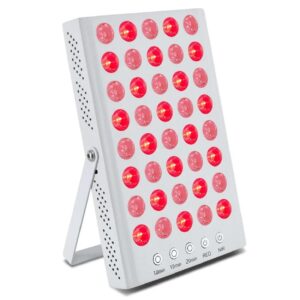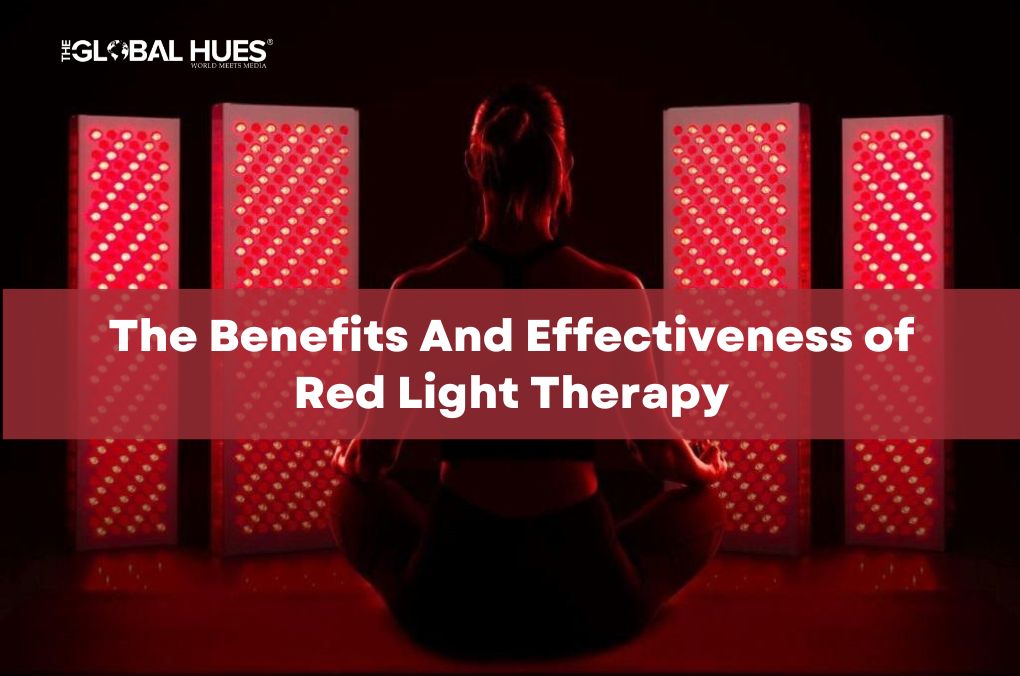Red light therapy (RLT) is a simple treatment that effectively improves your skin by reducing scars, wrinkles, acne, and redness. The treatment uses low-wavelength red light. RLT is also recognized for treating various other illnesses.
Red light therapy’s effectiveness in treating various medical illnesses is currently the subject of extensive research, the publication of small studies, and a large amount of internet discussion. Despite some encouraging research results, red light therapy’s full potential still needs to be discovered.
Red light therapy is also recognized as the following:
- Low-power laser therapy
- Low-level laser light therapy
- Soft laser therapy
- Non-thermal LED light
- Cold laser therapy
- Photonic stimulation and biostimulation
- Phototherapy and photobiomodulation
The Benefits of Red Light Therapy
Your body’s cells’ mitochondria, or “power plant,” are stimulated by red light therapy. Other cells can perform more efficiently and with more vitality by repairing skin, encouraging the development of new cells, and enhancing skin regeneration. Particular light wavelengths allow specific cells to absorb them and stimulate activity, to put it more precisely.
Red laser therapy is most frequently used for skin renewal. By promoting the skin’s natural cellular regeneration, healthier skin cells that are the outcome of light therapy treatments can aid in the restoration of a more youthful appearance.
However, the procedure has a wide range of uses beyond skin renewal. Red light therapy helps our skin to:
- Boost collagen production since it gives skin its softness, structure, and strength.
- Increase the development of fibroblasts, which makes collagen. Collagen is a component of the connective tissue that makes up skin.
- Boost the flow of blood to the tissue.
- Reduce cellular inflammation.
Some common uses of red light therapy include:
- Boosting the healing of wounds
- Diminishing stretch marks
- Reducing age spots, fine lines, and wrinkles
- Boosting the texture of your face
- Curing eczema, rosacea, and psoriasis
- Removing scars
- Rehabilitating sun-damaged skin
- Aiding those with androgenic alopecia in growing new hair
- Reducing acne
The Effectiveness of Red Light Therapy

Studies have demonstrated that red light therapy is effective for various conditions, including neuropathy, hair growth, low back pain, chronic skin conditions, muscle rehabilitation, and wound healing.
Most researchers agree that the outcomes thus far are encouraging but that more high-quality research with more significant populations is required.
Red light therapy isn’t a panacea for all illnesses, despite the internet being frequently awash in stories promising cures for almost every disease. RLT is often regarded as experimental.
There is scant evidence supporting the following claims about red light therapy:
- Postpartum depression, sorrow, and seasonal affective disorder are all addressed.
- It increases immunity, stimulates the lymphatic system to “detoxify” the body, decreases cellulite, and aids in weight loss.
- Combats periodontitis and dental infections and relieves back or neck pain,
- Treats cancer and acne
The Risks And Possible Side-Effects Of Red Light Therapy
Red light therapy is risk-free and painless. This therapy is less toxic, non-invasive, and abrasive than topical skin treatments. Unlike the cancer-causing ultraviolet (UV) light from the sun or tanning beds, RLT doesn’t use this type of light.
However, there is a chance that products could hurt your skin or eyes if they are misused—perhaps applied excessively or incorrectly. RLT units, however, have been linked to claims of scorching and burns. Some persons had burns from sleeping with the unit in place, while others got burns from corroded devices or broken wires.
Additionally, the danger of ocular injury exists. Red light therapy may require suitable eye protection even though it is safer for the eyes than conventional lasers.
When seeking treatment, the best course of action for you is to consult a dermatologist or a licensed, experienced cosmetic therapist. A dermatologist can explain the benefits of red light therapy and other potential treatments and validate that your skin problem is what you think it is.
If you conduct an internet search, you will also find numerous red light therapy items. Although these products are often safe to use, they might have a lower wavelength frequency (i.e., be less potent) than those that dermatologists or other qualified skin professionals might employ. The outcomes you anticipate could not materialize.
If you buy a red light therapy device, be sure to cover your eyes, adhere to the manufacturer’s instructions, and take proper care of the equipment.
FAQ
How many sessions will be required?
You’ll probably require continued care. Most skin disorders require more than one treatment session. For weeks or months, you’ll need to be seen one to three times per week.
When can you start seeing results?
We advise performing at least a 5-minute treatment daily to achieve the best effects. People have more pronounced outcomes for 4 to 6 weeks of consistent use. Going to a salon or spa can get expensive since you will need numerous visits to achieve results because using the device more frequently boosts your results.
Bottom Line
Some common skin disorders are being suggested as candidates for red light therapy. Although it’s still in its infancy, this therapy shows great potential. It is best to initially discuss RLT treatment with your doctor or dermatologist if you are interested in receiving it.
Before making a diagnosis, a skin specialist will examine your skin. You will then collaborate to discuss possible treatments to help you attain the desired outcome. Red light therapy is one possibility among many others. Never be afraid to talk to your doctor about your treatment options, including if you’re interested in a specific therapy and whether it’s safe and helpful for your skin problem.




